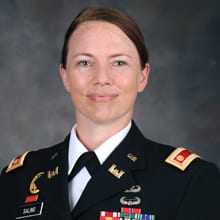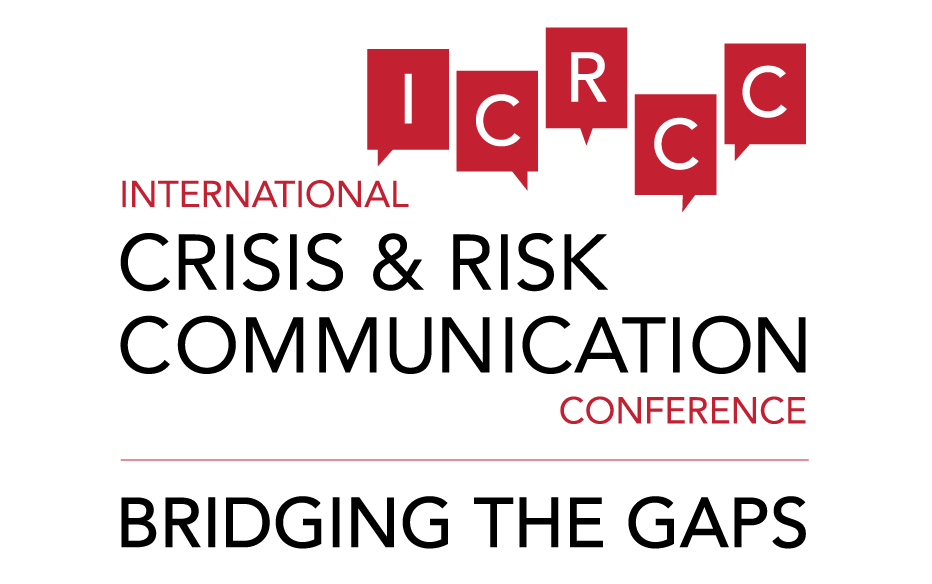
Assistant Professor
United States Military Academy
United States
MAJ Kristin Saling is an assistant professor in the Department of Systems Engineering at the United States Military Academy (USMA) at West Point. In addition to her teaching experience, Saling has presented at several U.S. and international research conferences and has published her work in academic journals such as Systems Engineering and Public Relations Review. She is also an independent consultant in systems engineering and risk analysis.
Before coming to USMA, Saling earned a Master of Science degree in Systems Engineering from the University of Virginia in May 2011 and a Master of Science degree in Engineering Management from the Missouri University of Science and Technology in August 2005. She received her Bachelor of Science in Operations Research and her commission as a Second Lieutenant in the U.S. Army Corps of Engineers from USMA in 2001. She has nearly twelve years of experience in Army engineering operations and has served two long tours and multiple short tours in overseas combat areas.
Co-authors
Karen Masullo (Firestorm Solutions)
Kristin Saling, M.S. (US Army) – Collaborator Kristin Saling is unable to attend due to military assignment
Jim Satterfield (Firestorm Solutions)
Karen Freberg, Ph.D. (University of Louisville)
Crisis Message Preference Model: Collaborative efforts from practice and research
Crises are unpredictable, yet are not expected. Each situation has different associated characteristics and factors to them, and while there may be some similarities to these based on whether or not they are created by nature or by human, there are different perceptions of them by the audience.
Crisis communication professionals have explored various ways to measure and analyze how individuals perceive these situations and the crisis messages that come with them, but more exploration into predictive behavior models can help better inform how to best communicate and inform our audiences in a time of crisis. Most existing academic research in crisis communications has focused on evaluating the effectiveness of crisis message strategies through surveys, questionnaires, experiments, and interviews.
However, through the partnership with Hootsuite, Firestorm Solutions, and two researchers in the area of crisis communications, we have initiated a joint collaborative project implementing the Riverside Situational Q-sort (RSQ; Sherman, Nave, & Funder, 2010; Funder et al., 2012) to help determine what these differences in audience perceptions of a crisis situation.
Two situations (workplace violence and natural disaster) were explored to help create the Crisis Preference Message Model. Findings and implications will be explored not only to the crisis literature and field, but also provide a new measurement tool to help practitioners determine the most appropriate and effective message at the right time in the right crisis situation.
2014
Breakout session: Assess Perceptions of Crises Among Crisis Professionals: Exploration with the Situational Q-sort*
Crises are significant, disruptive events that feature a rapid onset. Crisis communicators need to know if messages spread online via social media will produce effects on receivers that are similar or different when compared to the effects of messages conveyed through more traditional mass media or official organizational web sites. To respond appropriately, researchers and practitioners need more concrete information about how crisis situations are perceived, how messages impact audiences, and how these influences map onto actual audience behaviors, such as compliance with a food recall message. The recently developed Riverside Situational Q-sort (RSQ; Sherman, Nave, & Funder, 2010; Funder et al., 2012) provides a promising tool for capturing nuanced differences in audience perceptions of a situation.
Previous data applying the RSQ to perceptions of a food recall message have been published in a proof-of-concept paper in the Journal of Contingencies and Crisis Management (Freberg, Saling, & Freberg, 2013). Results showed that a subset of situational attributes were perceived differently when a food recall message was presented via social media, traditional media, or organizational media. One of the important next steps in q-sort methodology is to establish an “expert theory” comprised of a prototype based on expert responses (c.f. Wink, 1991). Four crisis practitioners will complete RSQs for the food safety situation for each of the three media conditions. This will allow the researchers to conduct direct tests of the expert theory by comparing expert predictions to audience perceptions.
*MAJ Kristin Saling, Karen Freberg and Laura Freberg co-authored this paper. MAJ Kristin Saling and Karen Freberg will present this presentation.
2013
Breakout session: Commanding Influence: Social Media Command Centers Create Influence and Trust in a Crisis Situation*
Crisis communicators and their emerging media team must anticipate the communication needs and expectations that come with a crisis event offline and online across multiple platforms (computer, tablet and smartphone). Social media and social media command centers provide the pinnacle of networked communication and dialogue, relationship management and information and dissemination in digital and mobile environment. However, there is a gap in the literature in exploring the social media command centers that collect and interpret these findings in crisis communications. It is important to determine the proper design and function of the social media command centers that monitor, listen and evaluate the conversations and information surrounding the crisis situation.
As social media command centers continue to emerge, the vital functions and requirements they must meet have not been fully defined. What must a social media command center do to meet all the needs of the crisis communication team in order to engage conversations, monitor and listen during a crisis situation?
*MAJ Kristin Saling and Karen Freberg co-authored this paper. MAJ Kristin Saling and Karen Freberg co-presented this presentation.


